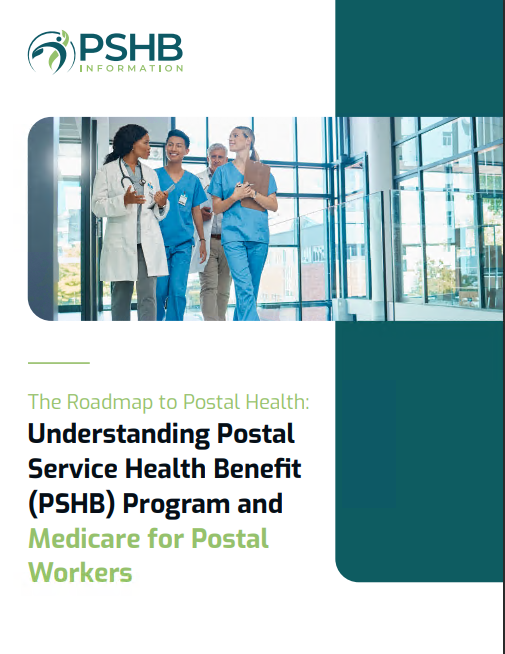Key Takeaways
-
Medigap policies help cover out-of-pocket costs left by Original Medicare, but PSHB members should weigh their options carefully before enrolling.
-
Understanding how Medigap interacts with your PSHB plan ensures you avoid unnecessary expenses and make the most of your coverage.
Understanding Medigap and Why It Matters
If you’re a member of the Postal Service Health Benefits (PSHB) program, you may have come across the term “Medigap” while researching your healthcare options. Medigap, also known as Medicare Supplement Insurance, is designed to help cover costs that Original Medicare doesn’t fully pay for, such as copayments, coinsurance, and deductibles. But here’s the big question: Do you actually need it if you’re already enrolled in a PSHB plan?
Let’s break it down in simple terms so you can decide whether Medigap makes sense for you and how its premiums might impact your budget.
What Medigap Covers (and What It Doesn’t)
Medigap plans are standardized policies that work alongside Original Medicare (Parts A and B) to help with out-of-pocket costs. Some of the common expenses covered include:
-
Medicare Part A coinsurance and hospital costs
-
Medicare Part B coinsurance or copayments
-
First three pints of blood for transfusions
-
Part A hospice care coinsurance or copayments
-
Skilled nursing facility care coinsurance
-
Medicare Part A and B deductibles (depending on the plan)
However, Medigap doesn’t cover everything. It does not include prescription drugs, routine dental, vision, hearing care, or long-term care. If you want coverage for those, you’ll need a separate policy or benefits from your PSHB plan.
The Role of PSHB in Your Healthcare Coverage
As a PSHB enrollee, you already have access to a health plan that includes comprehensive coverage. When you become eligible for Medicare at age 65, your PSHB plan continues, but it integrates with Medicare. Many PSHB plans work as secondary coverage to Medicare, reducing your out-of-pocket costs without needing Medigap.
How PSHB Works with Medicare
-
If you enroll in Medicare Parts A and B, your PSHB plan typically covers most remaining costs.
-
Some PSHB plans waive deductibles and lower cost-sharing for enrollees with Medicare.
-
Prescription drug coverage remains part of your PSHB benefits, eliminating the need for a standalone Medicare Part D plan.
This means Medigap may be unnecessary for many PSHB members since your federal health benefits already provide supplemental coverage.
Medigap Premiums: What to Expect
If you still want Medigap coverage despite having PSHB, you’ll need to be aware of the extra monthly premiums. Unlike PSHB premiums, which are partially covered by government contributions, Medigap policies are entirely paid out-of-pocket.
Factors That Affect Medigap Premiums
Medigap premiums vary based on several factors, including:
-
Age and when you enroll – Premiums are typically lower if you enroll during your Medigap Open Enrollment Period (the first six months after enrolling in Medicare Part B).
-
Pricing structure – Medigap plans use community-rated, issue-age-rated, or attained-age-rated pricing, which affects how costs increase over time.
-
State regulations – Some states have additional rules that impact costs and eligibility.
-
Insurance provider – Different insurers set their own pricing, and premiums may increase based on medical inflation and claims history.
Do You Need Medigap If You Have PSHB?
For most PSHB members, the answer is probably not. Your PSHB plan already acts as a secondary payer to Medicare, covering many of the same costs that Medigap would.
However, there are a few scenarios where Medigap might still be considered:
-
If you plan to drop PSHB coverage in retirement and rely solely on Original Medicare.
-
If you want additional coverage for certain out-of-pocket costs that your PSHB plan doesn’t fully pay for.
-
If you move to a state where Medigap offers unique advantages over PSHB supplemental coverage.
Before making a decision, it’s crucial to compare the costs and benefits of keeping your PSHB plan versus adding Medigap.
Alternatives to Medigap for PSHB Members
If you’re concerned about out-of-pocket costs but don’t want to pay for Medigap, consider these alternatives:
-
Stick with PSHB – Since PSHB integrates with Medicare, it often provides sufficient coverage without extra costs.
-
Use a Health Savings Account (HSA) before enrolling in Medicare – If you have an HSA, you can use it to cover medical expenses tax-free in retirement.
-
Compare different PSHB plans – Some PSHB plans offer better benefits for Medicare enrollees than others, so switching plans might be a better solution than paying for Medigap.
Making the Best Choice for Your Healthcare Needs
When deciding whether to get Medigap alongside your PSHB plan, ask yourself:
-
What are my current out-of-pocket costs with PSHB and Medicare?
-
Would a Medigap policy reduce my healthcare expenses enough to justify the extra premium?
-
Are there better alternatives within my existing PSHB plan that provide the coverage I need?
-
Do I plan to keep my PSHB benefits long-term, or will I eventually switch to Original Medicare only?
Understanding how your PSHB plan coordinates with Medicare will help you avoid unnecessary expenses and ensure you get the best coverage for your needs.
Get Help from a Licensed Agent
If you’re unsure about whether Medigap makes sense for you, speaking with a licensed agent listed on this website can help you evaluate your options. They can guide you through the costs and benefits, ensuring you make an informed choice about your healthcare coverage.








